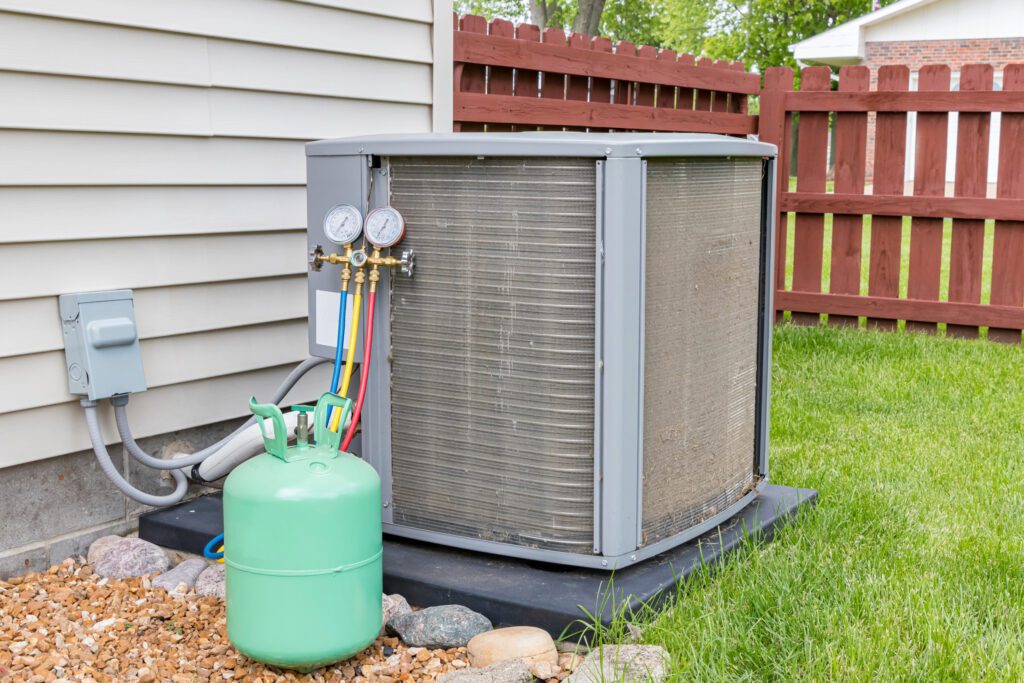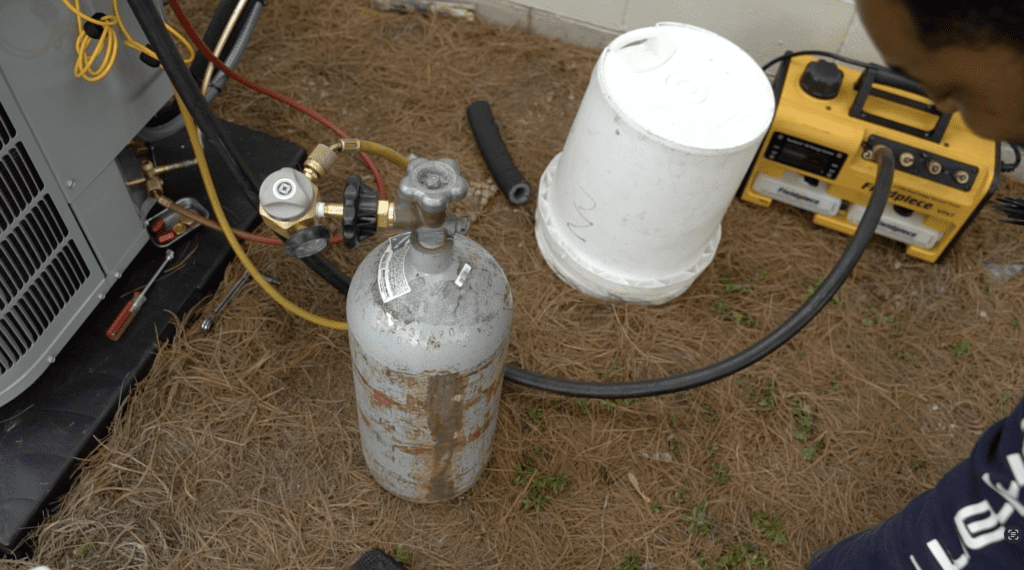HVAC refrigerant—think of refrigerant as the lifeblood of your HVAC system. Just like blood carries oxygen to keep you going, HVAC refrigerant transfers heat to keep your home cool and comfortable.
As your air conditioner operates, the refrigerant absorbs heat from the air inside, then expels it outdoors to maintain the perfect temperature. Without it, an HVAC system wouldn’t be able to do its job, highlighting its essential role in efficiency and performance.
Because of this, maintaining a comfortable home or office environment heavily relies on HVAC systems, which integrate various components to control temperature and air quality. At the core of these systems is the HVAC refrigerant—an essential element for effective heating and cooling. In this guide, Hilliard-Dublin Heating & Air unpacks the role of HVAC refrigerants, their significance in climate control systems, and the importance of selecting the right refrigerant.

Understanding HVAC Refrigerants
An HVAC refrigerant is a specialized substance used in heating, ventilation, and air conditioning systems to facilitate heat transfer. By absorbing indoor heat and expelling it outdoors, the refrigerant plays a pivotal role in both cooling and heating. It transitions between liquid and gas phases within the closed loop of the HVAC system, optimizing heat transfer efficiency.
The Functionality of HVAC Refrigerants
The core function of an HVAC refrigerant is to efficiently transport heat, enabling the HVAC system to condition indoor air effectively. Here’s the breakdown of how it operates:
1. Evaporation and Heat Absorption: Starting as a low-pressure gas in the evaporator coils, the refrigerant absorbs heat from indoor air, transforming it into a gas. This process cools the air, which is then circulated back into the building.
2. Compression: The refrigerant gas is then compressed, increasing its pressure and temperature, before moving to the condenser coils.
3. Condensation and Heat Release: Once it reaches the condenser coils, the refrigerant releases heat to the outside environment and transitions back to its liquid state. This cycle repeats, enabling the HVAC system to maintain desired indoor conditions.
The Importance of Selecting the Right HVAC Refrigerant
Choosing the appropriate refrigerant is crucial for multiple reasons:
– Energy Efficiency: A suitable refrigerant can significantly enhance the energy efficiency of HVAC systems, reducing energy consumption and lowering utility costs.
– Environmental Impacts: Older refrigerants have often been phased out due to their negative environmental effects, such as ozone depletion and high global warming potential (GWP). Modern alternatives are designed to be more environmentally friendly.
– System Compatibility: It’s vital to use refrigerants that are compatible with your system to prevent inefficiencies, potential damage, and expensive repairs.
– Safety: Refrigerants need careful handling, as some can be toxic or flammable. Ensuring compliance with safety standards is crucial for preventing accidents.
The good news is all our HVAC technicians are NATE-certified, have extensive training and years of accumulated experience. So, you can rest assured, we will take care of the job efficiently and effectively!
Common HVAC Refrigerants Used Today
A look at some refrigerants in current use:
– R-22: Historically widely used, R-22 is being phased out due to its ozone-depleting nature. Systems using R-22 are often updated with environmentally safer options.
– R-410A: Widely used in new residential air conditioning units, this refrigerant is known for its efficiency and reduced environmental footprint compared to R-22.
– R-32: Increasingly popular, R-32 offers superior efficiency and a lower GWP, making it a favored choice for contemporary systems.
Shifting Towards Greener HVAC Refrigerants
With growing environmental awareness, the HVAC industry is adopting eco-friendly refrigerants. Guidelines like the Montreal Protocol and the Kigali Amendment regulate high-GWP refrigerants, promoting the development of greener alternatives.
Thanks to advancements in technology, new HVAC systems now accommodate next-generation refrigerants, balancing high efficiency with environmental responsibility. Embracing these changes not only aligns with global environmental initiatives but also prepares for future regulations.

The more you know about HVAC refrigerant, the better your system will perform—just like understanding your own health leads to better well-being. If you’re ever unsure about anything, we’re always here to answer your questions and keep you informed!
So, staying informed about refrigerant options helps homeowners and businesses make choices that benefit both their indoor environment and the broader planet. Hilliard-Dublin Heating & Air is committed to helping you navigate these decisions for optimal heating and cooling solutions.
Don’t hesitate to contact Hilliard-Dublin Heating & Air at (614) 490-7520 or schedule an appointment online now by clicking here!
Bonus Cooling Tip! In the meantime, check out our blog on how to stay cool while waiting for your technician to arrive.






